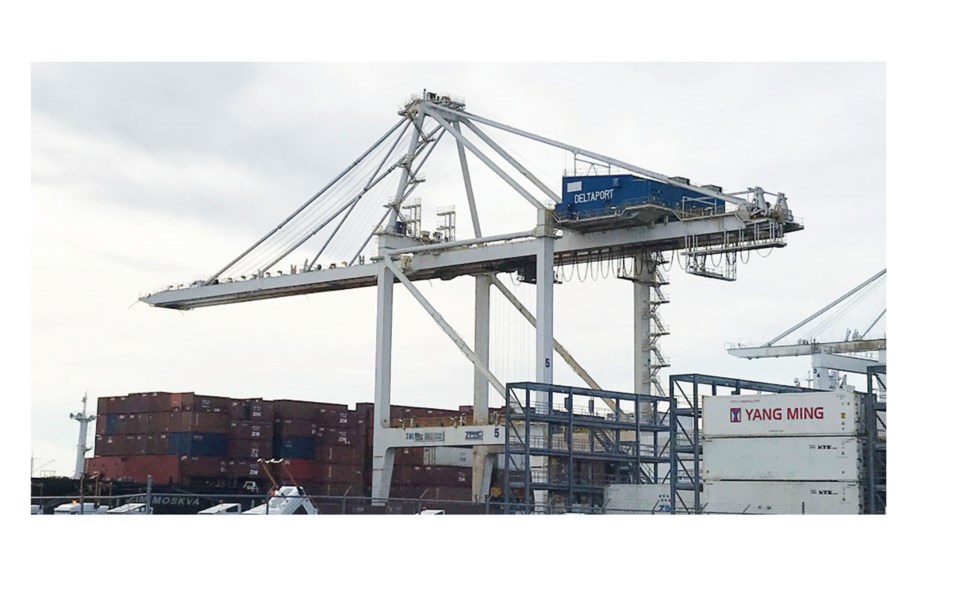It’s excellent news for Delta.
That’s what Against Port Expansion’s (APE) Roger Emsley had to say about federal Transport Minister Marc Garneau’s announcement last week that an investment of $9.2 million will be made for a project at the Ashcroft Terminal.
Emsley said it’s a welcome announcement that will provide a variety of benefits that further reduce the need for Port Metro Vancouver’s proposed Terminal 2 expansion at Roberts Bank.
“As a result this is one more nail in the RBT2 coffin in that it moves the intermodal operations away from the container terminals, making the exiting terminals more efficient and increasing their productivity within the existing footprint. I have always found it strange that the Port of Vancouver has been lukewarm to Ashcroft,” Emsley told the Optimist following the announcement.
The project for Ashcroft includes a new rail link that will be built from Ashcroft Terminal to Canadian National Railway’s main rail line. This expansion will provide producers and shippers additional options at Ashcroft Terminal to improve efficiency in shipping their goods to market, according to the federal government.
Also included is construction of an extra rail track to allow rail cars to be parked and assembled into longer trains to serve Canadian producers and shippers. The additional track infrastructure will support the movement and storage of rail cars to enhance fluidity through Canada’s Pacific Gateway Corridor.
An internal road network will also be built that includes a two-way road under the rail line. The grade separation will ensure that rail and truck operations do not interfere with each other, thereby increasing safety. This grade separation will also increase the operational efficiency of Ashcroft Terminal. The construction of a multi-commodity and storage warehouse, meanwhile, will support natural resource producers, allowing them improved access to domestic and international markets, say the feds.
Emsley noted the benefits for Delta include getting port trucks off the road and an overall reduction in the number of port truck trips in the heavily congested Lower Mainland. One of the issues is that a single container can make upwards of eight truck trips for one inbound or outbound container transaction, so Ashcroft would significantly reduce that need, he explained.
He said other benefits include moving the logistics of container handling out of the congested Lower Mainland, reducing the demand for port-related industrial space, providing shippers with a more efficient handling process, a more efficient access to major intermodal terminals such as Prince George and Edmonton and perhaps the Prince Rupert container terminal, as well as reducing the need for industrialization of prime agricultural land close to Deltaport.
The City of Delta has been supportive of the concept of inland terminals dating back to 2008 when civic politicians endorsed a motion to support the continued development of a terminal in Ashcroft.
Mayor Lois Jackson spearheaded meetings a few years ago to look at the potential benefits an inland port would have on the Lower Mainland and was part of a delegation that visited Ashcroft.
Council had also approved spending up to $45,000 US to hire a California-based company to carry out an inland port impact study. That study concluded the construction of an inland terminal would have significant traffic, economic, social and environmental benefits.
Among the findings, the study noted that an inland terminal would be able to ship full containers via rail to Port Metro Vancouver, eliminating the extra transfers. By 2031, this would mean avoiding 140,000 truck trips annually in the Lower Mainland. At the time, Peter Xotta, Port Metro Vancouver's vice-president of operations, told the Optimist they have to take into account the demands of the supply chain.
A report by Metro Vancouver outlined the benefits of utilizing inland ports as well as challenges. Included among the challenges is that “currently, about two out of three loaded import containers arriving in the region are loaded directly onto trains destined for eastern Canada or the U.S., effectively nullifying the need for an inland container terminal to undertake import handling activities.”



